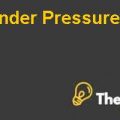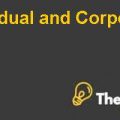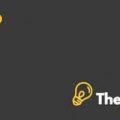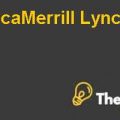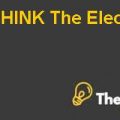FX RISK HEDGING AT EADS Case Study Solution
Problem Diagnosis
The management of Space and European Aeronautic Defense Company has come across a financial decision in the year 2008. The owner of Airbus faced a foreign exchange exposure in the year 2008, which started in the year 2006. However, the management has not decided to take an action to mitigate the risks associated with foreign exchange exposure. The foreign exchange exposure had been created because of the mismatch between the manufacturing payments and the revenues of the company.
The company used to pay for the manufacturing costs in Euro, and it received its payments in dollars. The company currently hedged its foreign currency exposure through forward contracts however, as the volume and the size of the revenues was increasing rapidly. The company had to think about breaking its past practices and come up with a new hedging strategy. Moreover, the exchange rates had also become significantly unfavorable. However, this policy change would have a number of consequences for the profitability, cash flows and the capability of the company to fund its strategic investments.
European Aeronautic Defense and Space Company is competing in a duopoly market with Boeing, and in order to remain competitive, the management had to mitigate its foreign exposure by determining the rationale behind its risk management policies and the impact on the firm’s costs by measuring the foreign exchange exposure in dollar terms. The time lapse between the payment commitments and the actual cash receipts is now 8 years therefore, management had to analyze other hedging alternatives such as futures, options, changing grid speed and make a recommendation for its new hedging strategy.
Analysis
The impact of the new policy changes will have to be evaluated qualitatively and quantitatively however, before that an analysis of the current situation faced by the company has been performed.
Current Policies, aims & FX Risk Management System of EAD
The aim of European Aeronautic Defense and Space Company is strategic in nature and it aims to become the worldwide leader in the space, air platforms and in systems. The goal of the company is to achieve revenues of around 80 billion Euros by the end of the year 2020. The management has also set other objectives for the company such as justifying the production of goods in US, potential acquisitions for the defense and security division and achieving EBIT margins of 10% by 2015.
As stated previously, there has been a significant mismatch between the manufacturing costs in Euro and the revenues of the company, which are received in dollars. The performance of Airbus has been significantly affected by the fluctuations in the exchange rate between sterling and Euro and this in turn affected negatively on the dollar. The company also faced transaction risk, which resulted in different time lags between the actual cash settlement date and the payment commitments date.
The company had therefore, adopted a double-pronged approach to risk management to mitigate the above foreign exposure. The double-pronged approach consisted of FX risk mitigation and FX risk transfer. The former implies that EADS sources largely from the US companies where the monetary systems use exchange rates pegged in dollars. On the other hand, the foreign exchange risk transfer is based upon the use of derivatives, mostly the forward contracts. Under the forward contracts, the company locked in a future exchange rate at which its revenues would be converted into Euros at a later date and thus decline the risk of losses because of the decline in dollar. The main purpose of the management to use these strategies was to protect the decline of the EBIT of the company against the expectations of the shareholders.
Speed Grid and its purpose at EADS
Speed Grid is the mechanical approach, which is used by the management of EADS to determine the weekly amounts of the FX, contracts to purchase in order to determine the hedging policy of EADS. The hedging speed depends on two factors, which are dollar to euro forward exchange rate and year to hedge. The underlying time diversification is defining of the speed grid in explaining the main purpose of speed grid at EADS and in its hedging policy. This purpose is to determine the amount of the forward contracts or in other words the total amount of the EBIT to hedge against the losses because of the decline in dollar rate.
FX RISK HEDGING AT EADS Harvard Case Solution & Analysis
The mechanics based on which this speed grid was working were highly complex.If the dollar exchange rate against the euro was stronger than the hedging speed also would be higher and hence more hedging will have to be done. Moreover, if we analyze the current situation faced by the company then it is evident that the current approach might not be relevant.It is feasible to handle the current or future level of foreign exchange exposure....................
This is just a sample partial case solution. Please place the order on the website to order your own originally done case solution

